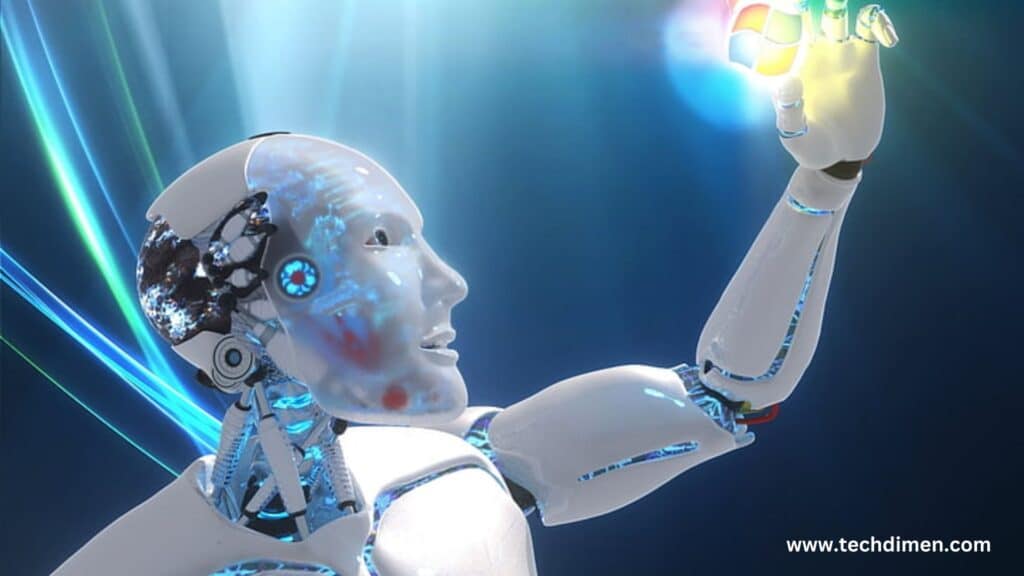Movement technology is reshaping how people walk, run, recover, and interact with their surroundings. From wearable movement sensors to brai computer interfaces, this field is advancing rapidly. Below, you’ll find an in depth examination of the top innovations in movement technology, why they matter, and how they improve lives.
Why Movement Technology Is Critical Today
Today’s world relies on Movement data for performance, health, and independence. Tracking motion helps prevent falls, aids athletes, and supports patients. Wearables and sensor networks provide time movement insights. AI powered biomechanics technology predicts injuries. Robotics enhances mobility. Neurotechnology and ambient sensing improve access and prevent accidents. This is movement technology at its best.
Wearables and Sensor Networks Form the Foundation
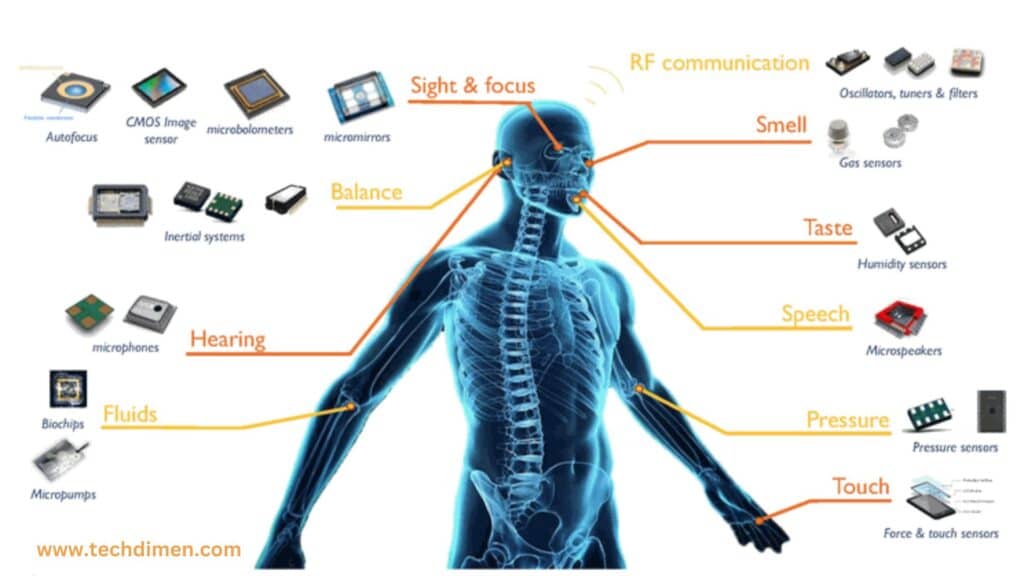
Sensor embedded clothing, smart insoles, and sophisticated IMUs capture joint angles, gait patterns, and posture in real time. Devices like Hexoskin smart shirts combine IMUs and ECG sensors to monitor movement and heart activity. Pressur sensing insoles, such as those made by NURVV Run, analyze footstrike and cadence. Wearables targeting posture correction use gentle vibrations to alert you when you slouch.
How Sensor Fusion Enhances Data Quality
Merging data from multiple sensors leads to precise motion tracking. Edge computing streamlines data processing directly on devices, while cloud integration allows in-depth analysis. Works seamlessly in athletic training, physical therapy, and home monitoring.
Haptic Feedback Systems Provide Sensory Guidance
Haptic feedback systems use finger or limb based vibrations to teach the body how to move. Rehab patients respond to vibrating cues that adjust Movement Technology patterns. In VR training, full body haptic suits stimulate muscles for feedback during virtual drills. Tactile belts help visually impaired users navigate their surroundings.
Closed Loop Feedback Drives Better Performance
Sensors detect incorrect movement and immediately deliver corrective haptic feedback. This loop accelerates learning in therapy and coaching. Users report that this sensory “nudge” feels like a coach guiding them physically.
AI Powered Biomechanics Transforms Movement Analysis
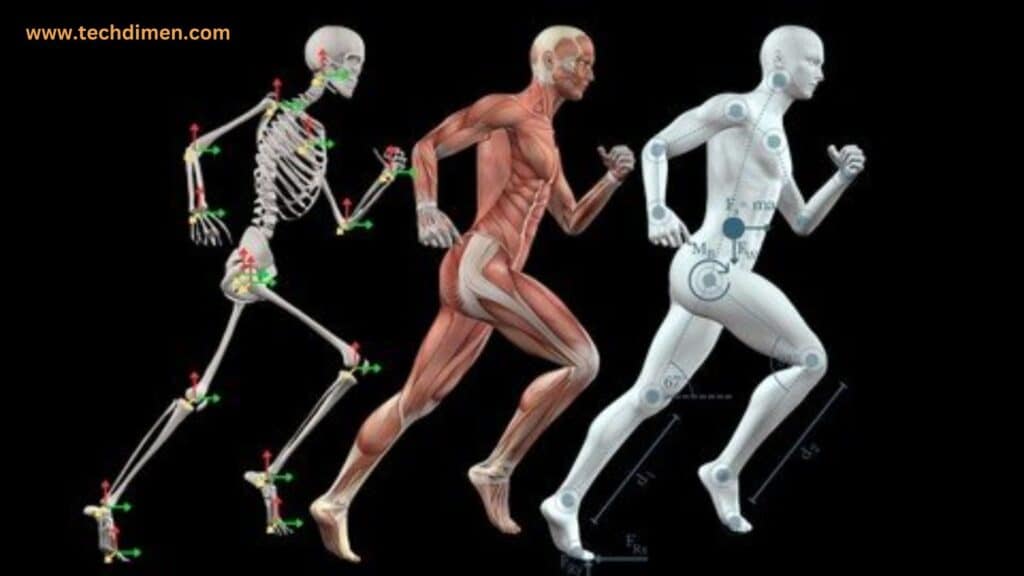
Artificial intelligence enables deep insights by analyzing complex biomechanical data. Tools such as OpenPose and BiomechZoo analyze body movement without reflective markers. Predictive movement analytics identify risks before injuries occur. Digital twins recreate a person’s biomechanics in a 3D virtual model, enabling detailed performance review.
the World Implementation in Sports and Healthcare
One professional soccer team applied A driven gait analysis and reduced hamstring injuries by 40 percent over a year. Analytics based on biomechanics technology allow coaches and therapists to make data backed decisions.
Robotics Exoskeletons and Smart Prosthetics Advance Mobility
Adaptive exoskeletons support heavy lifting and therapeutic walking. Smart prosthetics controlled by neural impulses restore movement with precision. Sensory loops integrated into these devices provide touch and pressure feedback back to the user.
Examples of Next Generation Assistive Devices
Ekso Bionics distributes exosuits for workplace safety and rehabilitation. ReWalk Personal 6.0 enables people with spinal cord injuries to walk again. Open Bionics develops prosthetic arms that provide a range of motion and tactile feedback.
Impact on Quality of Life and Independence
Individuals using devices like ReWalk report restored mobility. These technologies support standing, walking, and performing daily tasks independently.
Sports Tech Enhances Athletic Performance
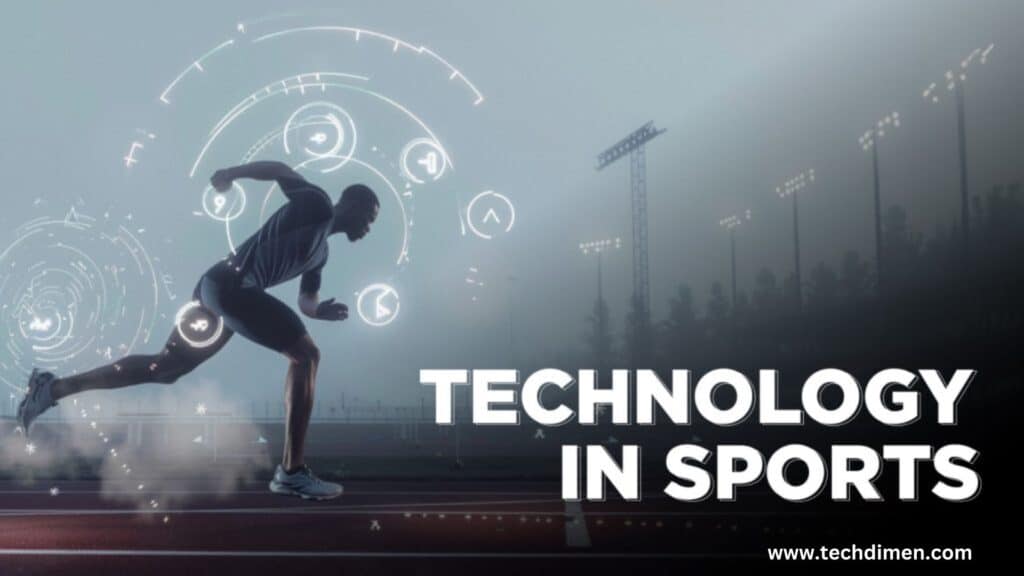
Advancements in sports tracking technology now include wearable or field based monitoring of distance, speed, jump height, and recovery metrics. Tools like Catapult and Kinexon track athletes in real time during practices and games. Force plates, combined with live video, reveal power and explosiveness in movements.
Monitoring Recovery and Fatigue
Heart rate variability metrics inform recovery status. Users of devices like WHOOP report a 25 percent decrease in injuries after using recovery data consistently.
Extended Reality Enhances Movement Training
Mixed reality systems overlay movement cues or rehabilitation exercises into world environments. These systems use motion tracking to guide users through Movement Technology and track progress. Rehabilitation progress becomes more engaging through gamified interactions, boosting adherence.
Stroke Rehabilitation Success Story
In a study, stroke survivors used virtual reality rehabilitation technology three times per week for eight weeks. Participants regained approximately 50 percent of upper limb coordination through immersive motion-based exercises.
Neurotechnology Enables Brain-Controlled Movement
Using EEG-based signals, non-invasive brain-computer interfaces decode movement intent so users can control robotic limbs or exoskeletons with their thoughts. Neural stimulation techniques are also being researched to “prime” movement pathways in the brain before rehab sessions.
Clinical Trials Confirm Benefits
EEG-driven BCI studies show stroke patients achieving average arm movement improvements of 12° over 12 weeks. These results suggest that neurotechnology mobility options can help restore motor function after injury.
Ambient Sensing and Invisible Movement Intelligence
Smart homes and care facilities are using ambient systems to detect movement passively. LiDAR, UWB, and radar constantly scan rooms to adjust lighting, detect falls, and alert caregivers. In one hospital, radar-based fall detection reduced incidents by 70 percent all without wearing a device.
Support for Aging in Place
Ambient sensing allows older adults to live independently while safety systems monitor movement. Falls trigger alerts, but daily living remains unhindered by gadgets worn on the body.
Hybrid and Quantum Computing in Motion Science
High fidelity biomechanical modeling demands heavy computing power. Hybrid computing solutions combine AI driven classical methods with quantum enhanced processing to simulate muscle mechanics and predict movement patterns. These tools cut analysis time from weeks to hours.
Advantages of Cutting Edge Simulation
Researchers used quantum-enhanced simulation to refine exosuit designs, reducing weight by 15 percent and cutting development time significantly.
Ethics Privacy and Bias in Movement Monitoring
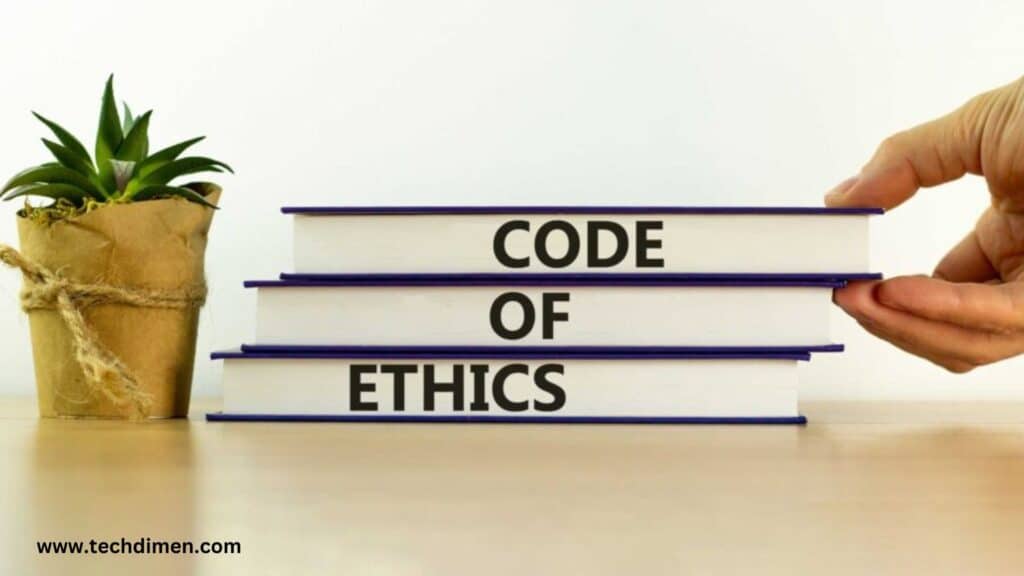
Movement data can reveal health conditions, daily routines, and cognitive patterns. Who owns this data users, manufacturers, or providers? Workplace tracking can veer into surveillance if companies track employees without consent. Algorithmic bias can misinterpret movement data from diverse body types or ages.
Data Protection Is Critical
Studies show 62 percent of consumers worry about how their motion data is used. Almost half insist on retaining ownership. Legal frameworks like GDPR support user data control, but gaps remai especially in private companies.
Movement Technology Summary table
| Category | What It Is | Real-World Example |
|---|---|---|
| Wearable Sensors | Devices that track motion, posture, and gait in real time | WHOOP strap, smart insoles |
| Haptic Feedback | Touch-based systems guiding or correcting movement | Haptic VR gloves for rehab |
| AI Biomechanics | Algorithms analyzing body mechanics for prediction and optimization | OpenPose motion tracking in sports |
| Exosuits & Prosthetics | Robotic gear enhancing or replacing natural movement | Ekso Bionics exoskeleton |
| Neurotech Interfaces | Brain-computer links decoding movement intention | Neuralink’s BCI for motor control |
| Ambient Sensing | Non-wearable systems detecting motion in a space | LiDAR for fall detection in eldercare homes |
| XR Movement Training | Mixed/augmented reality used for physical training and rehab | NeuroTrainer for cognitive-motion rehab |
Looking Ahead The Future of Movement Technology
Tomorrow’s tech won’t just react to movemen it will anticipate it. Vehicles and environments will adapt to each negative or positive shift in motion. The line between therapy and enhancement will blur as technologies like BCI exoskeleton combos emerge. Fal detection mats, VR powered injury recovery tools, and sensor integrated roads could become standard in smart cities.
FAQs
What is Movement Technology?
Movement Technology refers to the integration of advanced tools, sensors, and algorithms to measure, enhance, and interpret human motion. It combines biomechanics, wearable sensors, AI, robotics, and neurotechnology to help people move better, whether for athletic performance, rehabilitation, or everyday tasks.
How is Movement Technology used in healthcare?
Patients can wear motion sensors that track their gait, posture, and progress in real time. Therapists use this data to adjust treatment plans more precisely. Technologies like exoskeletons and haptic feedback devices also help patients regain mobility and retrain their muscles.
Can athletes benefit from Movement Technology?
Elite and amateur athletes use wearable tech and motion analysis platforms to optimize performance and avoid injuries. These systems track everything from stride length and force output to recovery metrics. With real-time feedback, athletes can fine-tune their form, monitor fatigue, and train smarter, not just harder.
What are examples of Movement Technology devices?
Examples include wearable sensors like IMUs (Inertial Measurement Units), smart clothing with embedded motion-tracking fibers, haptic gloves, robotic exosuits, and neuro-controlled prosthetics. Platforms like WHOOP, Catapult, and OpenPose also fall under this umbrella, offering detailed movement analysis for various applications.
How does AI improve movement analysis?
AI takes movement tracking to the next level by analyzing massive datasets in real time. It can recognize patterns, predict injuries before they happen, and even simulate future movement through digital twins. Deep learning models assess joint stress, symmetry, and motion quality, making feedback more personalized and actionable.
What role does haptic feedback play in movement tech?
Haptic feedback lets users “feel” digital interactions through touch, vibration, or pressure. It’s used in rehab, VR, and assistive devices to improve motor control and spatial awareness. For example, a patient recovering from a stroke might wear a haptic armband that buzzes when their arm deviates from a proper movement path.
Is Movement Technology only for people with injuries?
Not at all. While it’s invaluable in rehabilitation, movement tech also supports healthy users. It helps desk workers maintain better posture, trains athletes to improve technique, and enables people to monitor their daily mobility and fitness levels. It’s about prevention and optimization, not just recovery.
What are the privacy concerns with Movement Technology?
Because many of these systems collect detailed personal data like how you move, where you go, or how fast you react privacy is a major issue. There are concerns about data ownership, third-party access, and how movement data might be used in workplace surveillance or insurance decisions. Legal frameworks are still catching up to the technology.
Can Movement Technology be used at home?
Yes, and it’s becoming more common. Smart home systems can track movement patterns to assist residents, prevent falls, and automate lighting or temperature based on activity. Wearables can sync with apps to deliver feedback on posture, balance, or walking gait. It’s all about making environments more responsive to your motion.
What’s the future of Movement Technology?
The future points toward fully adaptive systems that respond in real time to how you move. We’re looking at cities, vehicles, and even clothing that interact dynamically with human motion. As AI, neurotech, and quantum computing evolve, movement technology will shift from simple tracking to prediction and enhancement blurring the line between natural and augmented movement.
Conclusion
Movement technology now impacts daily life from wearable movement sensors to haptic feedback systems, AI in movement analysis, and brai computer interfaces. These tools prevent injuries, support rehabilitation, and enhance independence. If you want to experience this revolution firsthand, explore wearable posture tools, visit companies like Ekso Bionics or ReWalk, and follow BCI and biomechanics updates in rehabilitation journals.

Jhon AJS is a tech enthusiast and author at Tech Dimen, where he explores the latest trends in technology and TV dimensions. With a passion for simplifying complex topics, Jhon aims to make tech accessible and engaging for readers of all levels.

